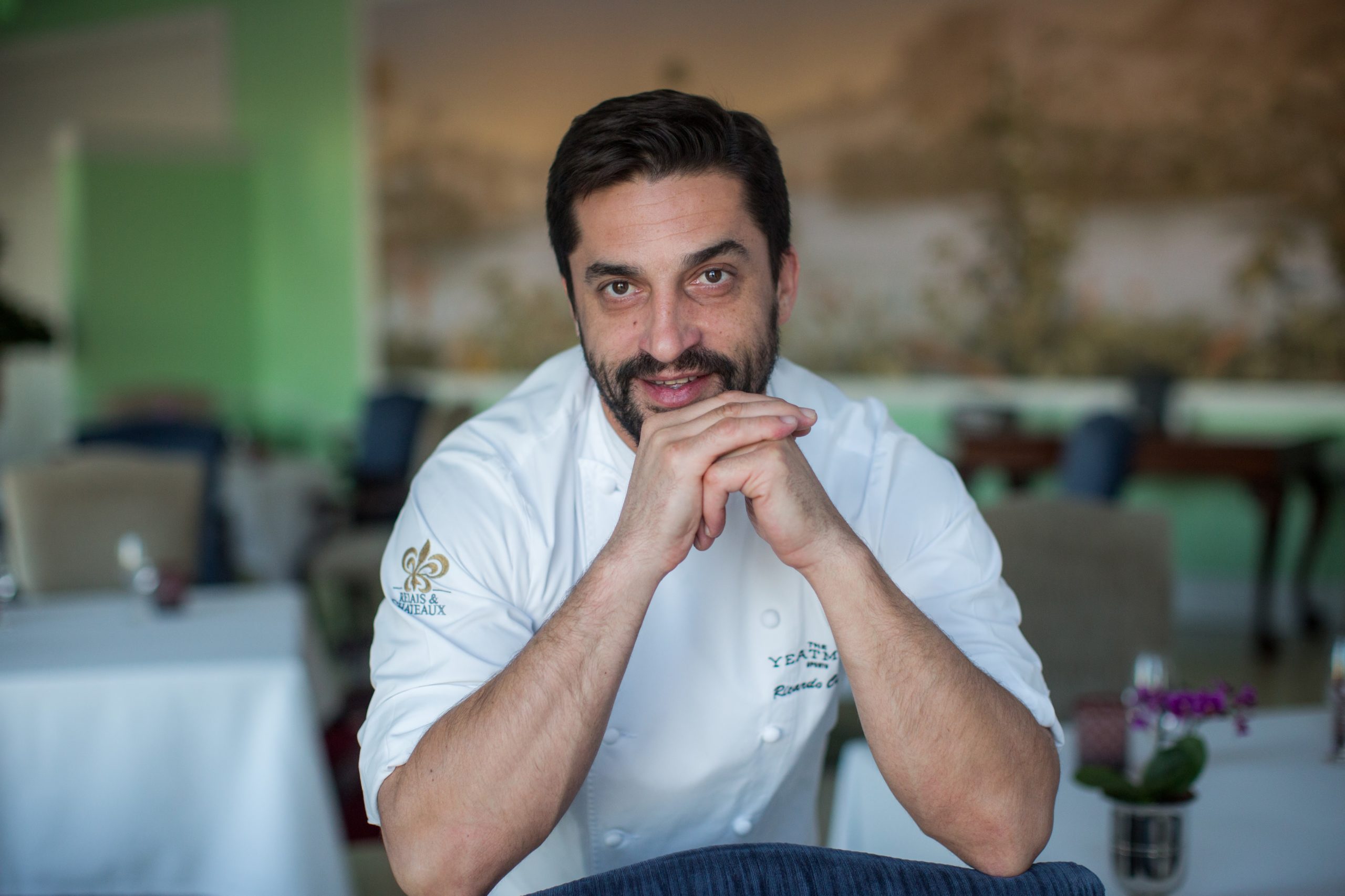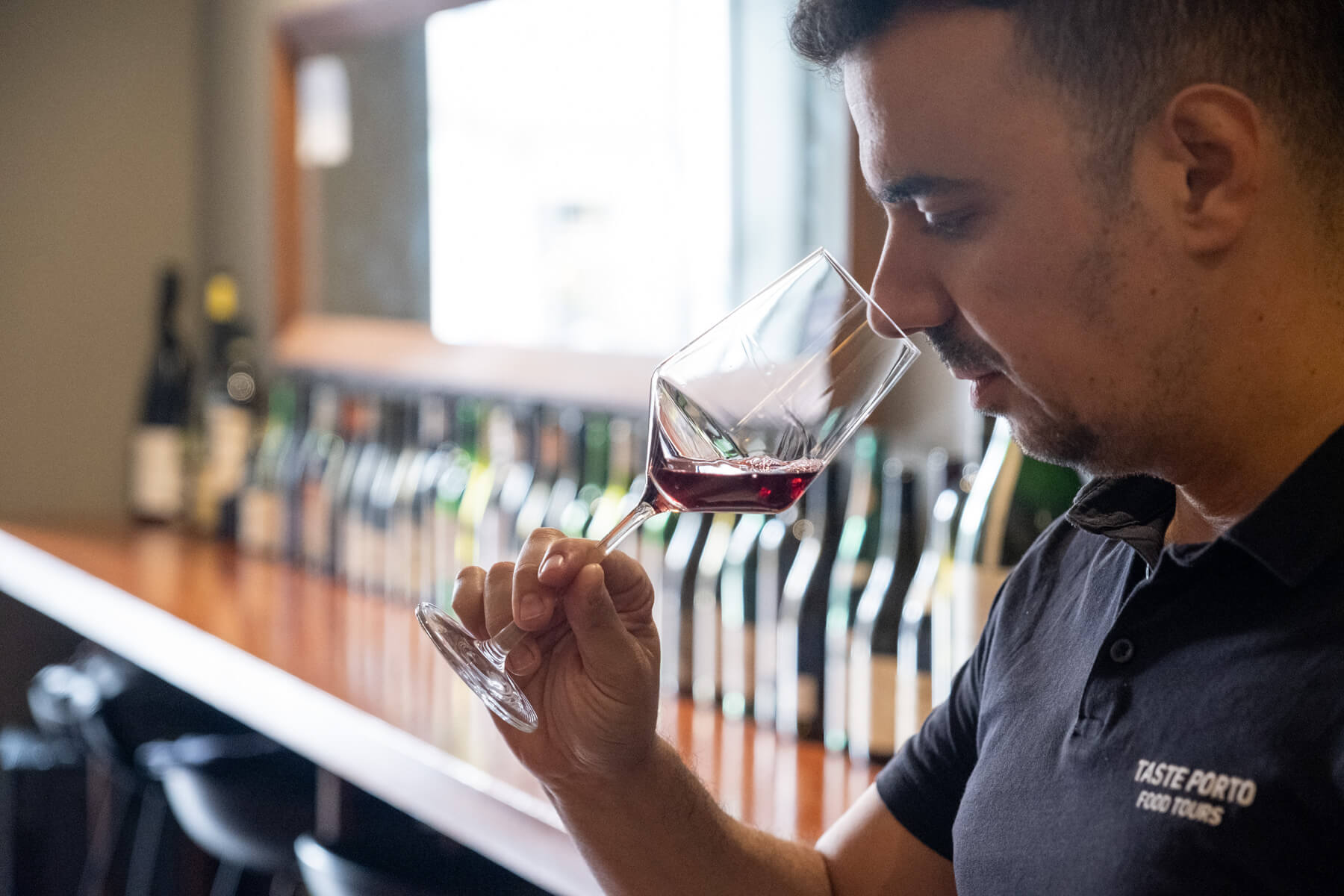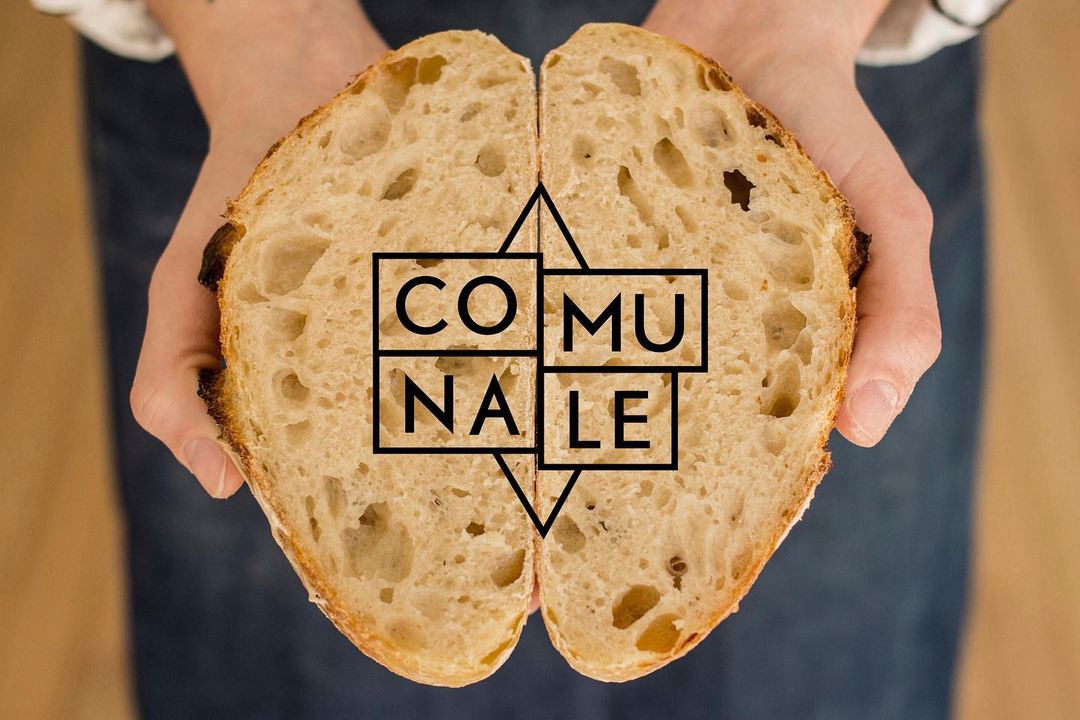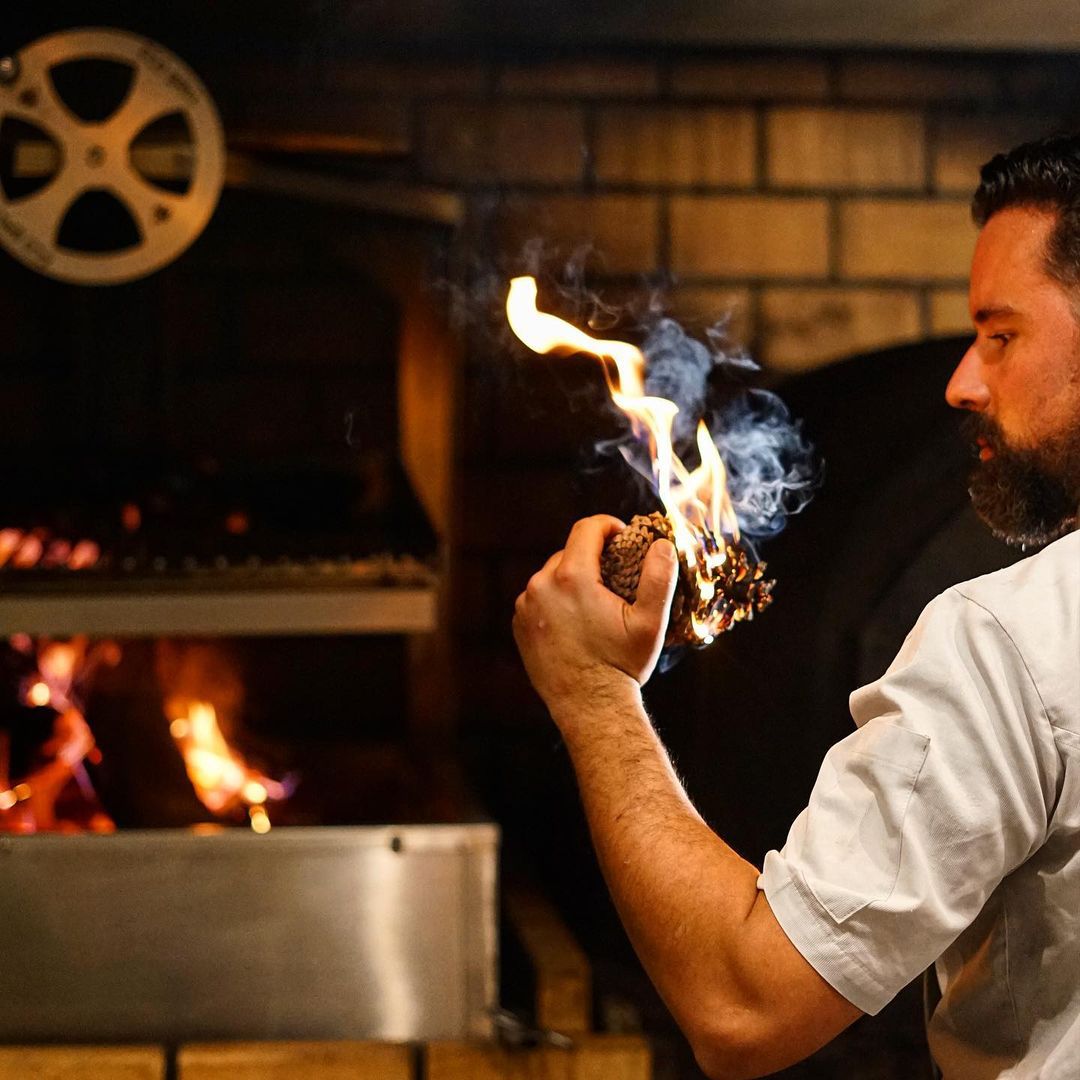
One Chef at a time – Meet Ricardo Dias Ferreira, Chef at Elemento
This interview was conducted online during the pandemic, providing insights into the restaurant’s situation at that particular time. From the primitive side of a wood-fired kitchen to the experience of managing a multicultural team of 75 chefs at Shangri-La, in Sydney, Chef Ricardo Dias Ferreira reveals his thoughts and feelings about food. Continue scrolling to read the original interview below (in Portuguese).
Elemento is a restaurant that features the primitive side of a wood-fired kitchen. We’re guessing that your family didn’t teach you that powerful life lesson: “don’t play with fire”. Why did you choose to pursue a culinary career?
Cooking was a way of escaping from a more standard routine or that stereotype of must-go-to college and must-be a doctor or an engineer. Cooking was a way of embracing creativity and working a manual job.
I began “playing with fire” at a very early age, during family gatherings, at my grandparents’ farm in Montijo. My grandparents were farmers and livestock breeders and I remember being fascinated by this ‘being’ because it is difficult to master it and there’s a science behind fire.
In Portugal, you worked at Ritz Carlton, Sheraton, The Yeatman and Westin. Afterward, you did a culinary internship with Martin Berasategui, a Michelin-star chef. Then you teamed up with Quay Restaurant-Sydney, considered one of the best restaurants in the world, managed by chef Peter Gilmore, founder of the Master Chef Australia TV program. Can you list some of the things you learned from these chefs?
I can’t list the things I learned from these chefs, but I can say that each house was a school and a way to become a better cook and a better person. Each one of the chefs with whom I worked had a different vision and a unique style and one could absorb that.
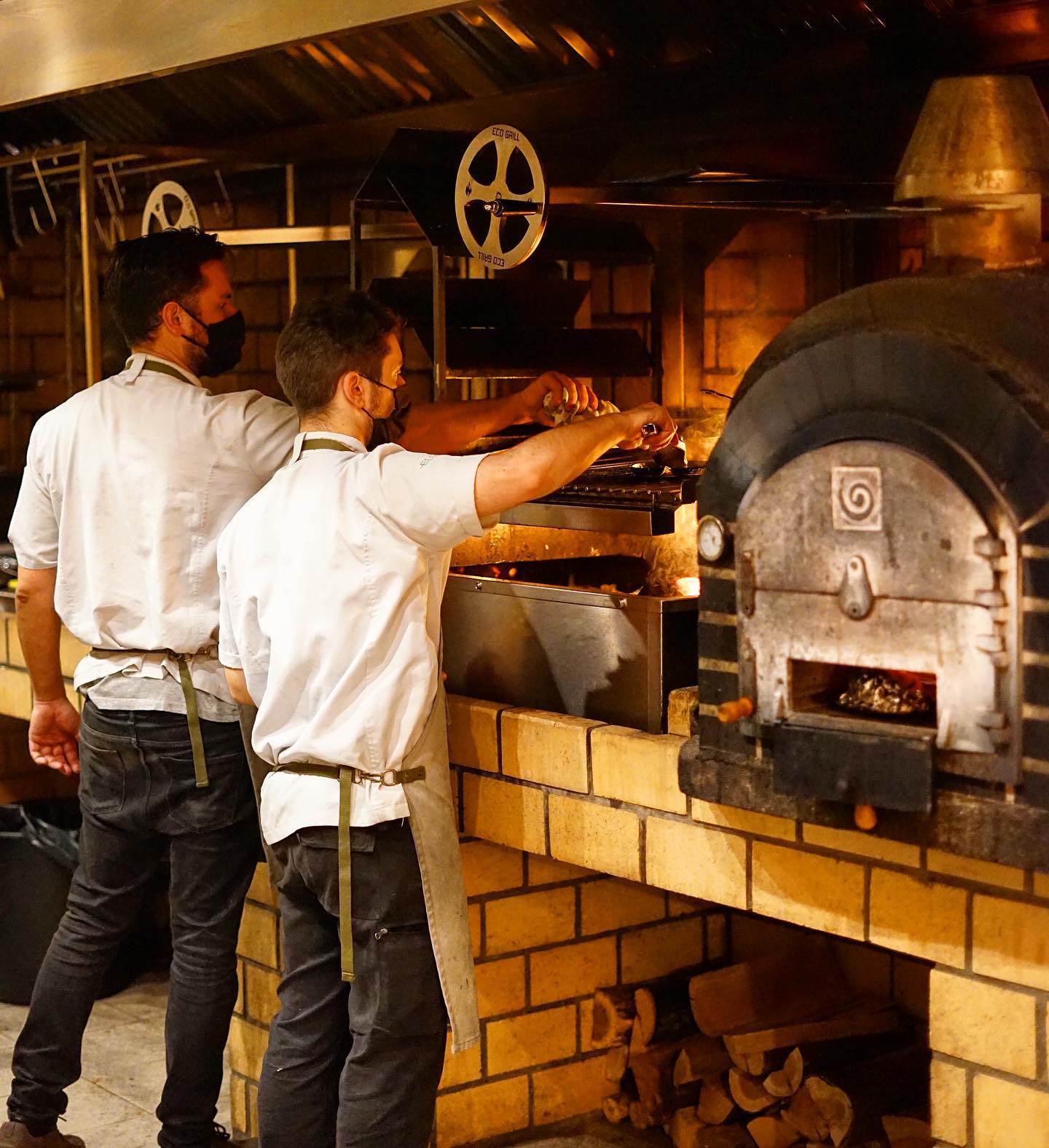
You managed a multicultural team of 75 chefs at Shangri-La, in Sydney. Did that help you discover your own management style?
That was my biggest challenge. In addition to understanding each person, I had to understand each culture because, at that moment, I had to manage the entire F&B engine of the Hotel (both in the kitchen area and in the steward department), and FOH/room as well. I had to deliver immediate results to the accounting departments in Sydney and Hong Kong and, above all, I had to prove that I was able to control the “Monster” that was the operation of the Hotel.
Besides the multicultural team, you’ve experienced different nationalities coming together in the dining room. What has been the biggest challenge you’ve faced on the job?
Getting to know where my clients came from, their nationality and train myself to a broad sense of taste. For instance, the way we use our bases, salt, garlic, flavorings, wine… not all nationalities love the same tastes. So I had to understand what I was doing there and where I wanted to take the different cuisines, I had to create and renew concepts, and deliver excellent performance for the banquet department.
By that time, we used to serve more than a thousand meals for different groups… daily. The management part was a big step forward towards my career as a cook, chef, leader. Possibly the hardest department I was in was the breakfast department because we are talking about a hotel with 600 rooms and a time frame of 4 hours to serve in which we have to follow the brand standards and the customer standards who choose this type of hotel, which is the most luxurious hotel in Sydney. We had to be ahead of our competition and the breakfast used to be the start of that race.
If you never became a chef, in what other ways would you use your creativity?
Possibly I would have followed a career in Law. But I get bored with something boring easily. My head keeps thinking about new things to do.
What do you do to stay current on new trends? Describe two or three of the most interesting industry trends.
I do some research, I’m always exploring new things and I’m trying to find my own identity without copying someone’s work. Due to everything that is happening in the world, this sector will have to uncomplicate things and turn to a more casual way of doing stuff (despite the cuisine that is practiced in each restaurant).
Some scientists argue that the human brain has tripled in size the moment man discovered fire and started cooking food before eating it. At your restaurant, despite the status of the fire, the ingredients are the protagonists of the story. In your opinion, what does it mean to “treat the food you cook with respect”?
It means to understand what the product is telling us, it also means not to complicate. In my opinion, “treat the food you cook with respect” means that we should keep things simple and present what we receive and what we serve.
Your food is inspired by Portuguese cuisine. Buying local and seasonal food is your mantra. In your opinion, any restaurant should embrace a seasonal menu if they want to be successful?
It depends on what you want to do and what kind of cuisine you enjoy cooking. We live in a global world, Portuguese products are exported and we should be importers as well, even if it’s just to guide our small/medium producers into introducing or growing something new and different that is suited to Portugal’s climate.
Potatoes are a good example of globalization because potatoes were imported from another continent and now we use them in everything. Cod is another good example. We have to open our eyes and see what’s going on outside our bubble in order to evolve. Otherwise, we will just keep copying each other.

Elemento’s logo is a tree, a symbol of the importance of firewood for the business but also your concerns with the environment. If you had to choose another symbol, which one would you choose and why?
I wouldn’t choose a different symbol. The symbol is a pine tree and it represents my DNA and my times in Pinhal do Rei, in Leiria. It is my hometown and I couldn’t change my restaurant’s logo.
Fire brings friends and families together, much as it’s done for thousands of years. We’d like to say the same about the pandemics. What are your future prospects?
We have to see the two sides of the coin: the side of the cook/chef who works for someone and the Owner or so-called Chef Patron. It is hard because our work has come to a standstill but we still have bills to pay. And the restaurants that are offering takeaway and delivery services don’t make enough money to cover all fixed costs or variants of a business.
On the 1st day of every month, I have to pay my rent. Before that, I have to pay my employees, then I have to pay business taxes and, even behind closed doors, I have to pay the electricity bill because I just can’t turn everything off.
It is hard to deal with this feeling of abandonment and to hear that financial aid is late, or that we are missing out on financial aid (always with the promise of being paid the next month). Even so, I will take a chance and continue my work in a new place that Patrícia and I were already planning well before the pandemic hit.
What makes you happy at work?
Having a happy and healthy team that paddles in the same direction and doesn’t let egos take control.
If Porto was a culinary dish, what would it be?
All that characterizes this city.
Let’s end with a drink. You’re sitting down in your fantasy bar. What’s in your glass?
Cider.
PORTUGUÊS: You can read the original interview below.
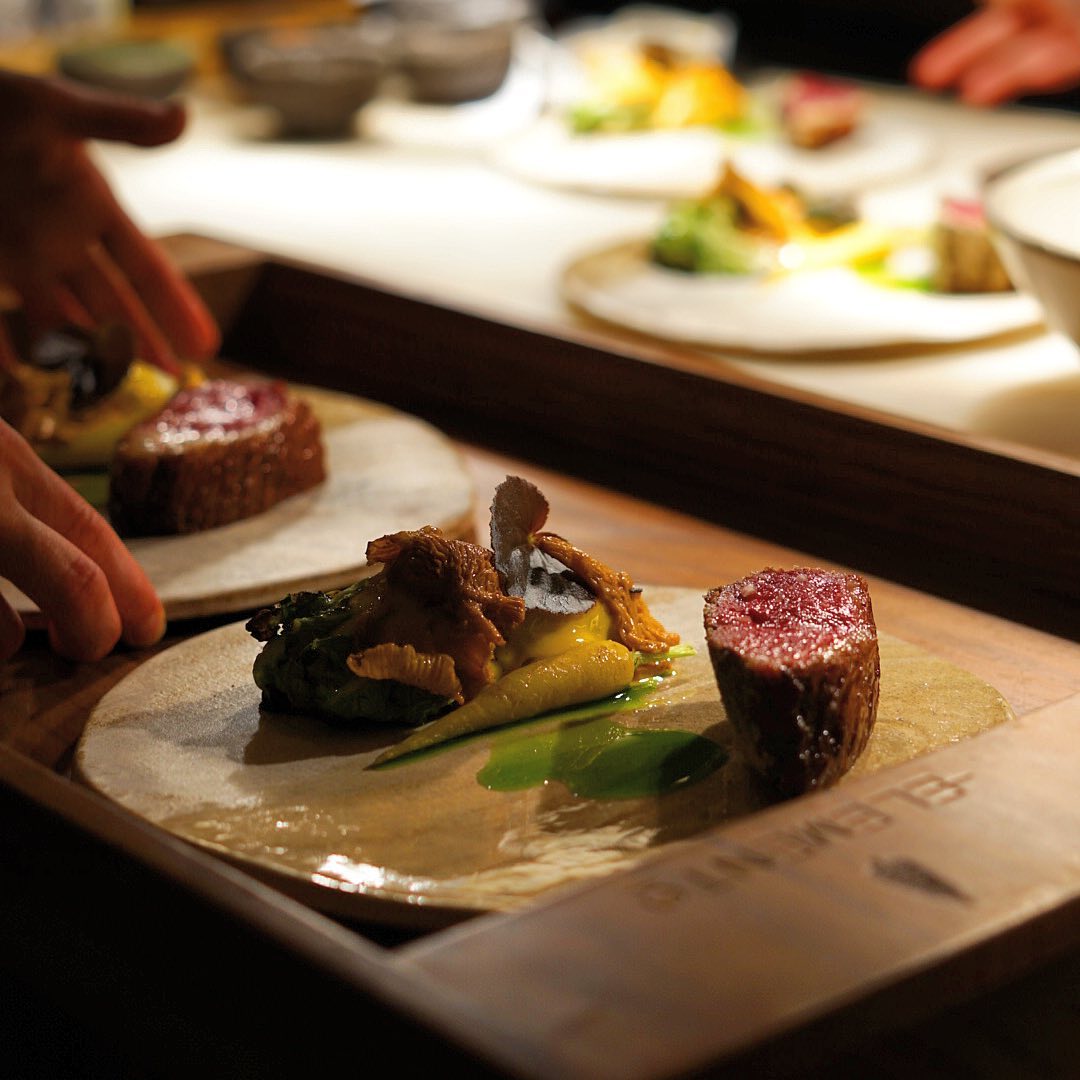
O Elemento é um restaurante que apresenta o lado primitivo de uma cozinha onde a comida é integralmente confeccionada a lenha. Claramente a sua família não o ensinou a não brincar com fogo quando era pequeno. Como surgiu a cozinha no seu caminho?
A cozinha em parte foi um modo de escapatória para abraçar uma profissão dita manual, de imaginação e fugir a uma certa rotina ou a um estereótipo de ter que ir pra a faculdade e ter de ser doutor ou engenheiro. O fogo foi me ensinado desde cedo nos almoços de família da quinta dos meus avós no Montijo na qual eram agricultores e criadores de pecuária e desde cedo fascinou-me esse ser vivo por ser difícil de dominar e ter uma dita ciência por de trás.
Em Portugal, trabalhou no Ritz Carlton, no Sheraton, no The Yeatman e no Westin. Colaborou também com Martin Berasategui, o chef estrela Michelin, em San Sebastian. De seguida levantou asas rumo ao Quay Restaurant-Sydney, considerado um dos melhores restaurantes do mundo e gerido pelo chef Peter Gilmore, fundador do Master Chef Australia. Consegue enumerar o que aprendeu em cada uma destas experiências e com cada um destes chefs?
Não consigo enumerar mas sim dizer que cada casa foi uma escola em diferentes partes do querer ser um cozinheiro e uma pessoa melhor. Cada um tem uma visão diferente e um estilo próprio e isso absorve-se.
Gerir uma equipa de 75 chefs de diferentes nacionalidades no Shangri-La, em Sydney, ajudou-o a descobrir a sua própria forma de gestão de equipas?
Foi o meu maior desafio, para além de entender cada pessoa tive em contra-relógio de entender cada cultura pois na altura tive que regular todo o motor de F&B do Hotel tanto na parte da cozinha como o departamento de stwarts, e FOH/sala, pois tive que apresentar resultados imediatos ao departamento de contabilidade tanto de Sydney como de Hong Kong, aos meus superiores, e subretudo mostrar que era capaz de controlar o “Monstro” que era o funcionar do Hotel.
Para além da gestão de uma equipa multicultural a seu cargo, chegou a ter pessoas de 40 nacionalidades diferentes na sala de jantar. Qual foi o maior desafio que já teve enquanto Chef?
Perceber de onde vinham os meus clientes a sua nacionalidade e adaptar-me enquanto Português e cultura gastronómica Portuguesa a uma cozinha para o palato de todos. Sobretudo no uso das nossas bases, sal, alho, aromáticos, vinho porque nem todas as nacionalidades tinham esse gosto. Entender o que ali estava a fazer e para onde queria levar as diferentes cozinhas, criar ou renovar conceitos, ter tudo em linha para o departamento de banquetes que era comum servirmos mais de mil refeições diárias para diferentes grupos.
A parte de gestão foi um grande avanço na minha sobrevivência enquanto cozinheiro, chefe, líder. possivelmente o departamento mais duro foi o dos pequenos-almoços pois estamos a falar de um hotel de 600 quartos e com um time frame de 4 horas para servir em que temos que seguir standarts da marca e dos próprios clientes no hotel mais luxuoso de Sydney. Tinhamos que estar à frente da nossa concorrência e os pequenos-almoços eram a partida dessa própria corrida.
Se não seguisse este caminho, de que outra maneira acabaria a usar a sua criatividade?
Possivelmente tinha seguido a vertente de advogado. Mas chateio-me muito com algo aborrecido. A minha cabeça não pára de pensar em algo novo para fazer.
Como se mantém atualizado sobre as novas tendências? Consegue descrever-nos algumas das tendências interessantes do setor da restauração nos últimos anos?
Com muita pesquisa e tentativa sem copiar ninguem e ter a própria linha e identidade. A restauração devido a todo o sector social e tudo que se passa no mundo vai ter a tendência de se descomplicar e virar a uma vertente mais casual independente do tipo de cozinha que se pratica.
Alguns cientistas defendem que o cérebro humano triplicou de tamanho no momento em que o homem descobriu o fogo e começou a cozinhar os seus alimentos. No Elemento, apesar do protagonismo do fogo, são os ingredientes os reis do prato. No seu entender, o que significa tratar os ingredientes com respeito?
Entender o que o produto nos diz, não complicar e não exagerar. Ser simples e directos e mostrar sem pudores o que recebemos e o que servimos.
A sua comida é de base portuguesa, em grande parte proveniente de pequenos produtores e respeitadora da sazonalidade. Na sua opinião, qualquer restaurante que abra hoje e pretenda ter um futuro risonho deve ter isto em conta?
Depende do que quer fazer e de que tipo de gastronomia quer aplicar. Vivemos num mundo global os nossos próprios produtos são exportados e também nós deveremos ser importadores nem que seja para guiar os nossos pequenos/médios produtores em introduzir ou produzir algo novo e diferente que se dê bem com o clima. A batata é um exemplo de globalização pois veio de outro continente e nós usamos em tudo. O bacalhau é outro exemplo. Temos que tirar as palas dos nossos olhos e ver o que se passa lá fora para crescermos. Sem isto vamos continuar a copiar-nos uns aos outros.
O símbolo do restaurante é uma árvore, representando não só a importância da lenha para o negócio como as suas preocupações com o ambiente e sustentabilidade. Se tivesse de escolher outro símbolo, qual escolheria e porquê?
Não escolheria mais nenhum. O símbolo é um pinheiro e esse representa o meu adn e a minha história de vida passada no Pinhal do Rei, em Leiria. É a minha terra e não o mudava.
Sabemos que o fogo, quando controlado, junta pessoas. No momento em que nos encontramos agora, dá vontade de dizer o mesmo das pandemias. Quais são as suas perspectivas para o futuro?
Temos que ver duas partes: a do cozinheiro/chef de cozinha que trabalha para alguém e do Proprietário ou chamado Chef Patron. É duro, é incerto por não sabermos quando abrir, por vermos o nosso trabalho parado, por ter contas para pagar mesmo com faturação zero ou como vários que seguiram o take away ter uma faturação que pouco ou nada tapa todos os custos fixos ou variantes de um negócio.
No dia 1 de cada més pago a minha renda, Antes disso, pago os salários, depois tenho que pagar os impostos e, mesmo fechado, tenho que pagar a luz pois não posso desligar tudo do restaurante.
É mais duro sentir abandonado e ouvir apoios que tardam ou vêm aos pingos muitas vezes faltando com a promessa de serem pagos no mês a seguir. Mesmo assim vou arriscar e prosseguir num novo espaço que eu e a Patrícia já estávamos a planear bem antes da pandemia e que ficou em águas de bacalhau.
O que o faz mais feliz no seu trabalho?
Ter uma equipe feliz e saudável, sem egos e que remam no mesmo sentido.
Se o Porto fosse um prato, qual seria?
Todos que caracterizam esta cidade.
Vamos terminar com uma bebida. Está sentado num bar e segura um copo. O que está lá dentro?
Uma cidra.
